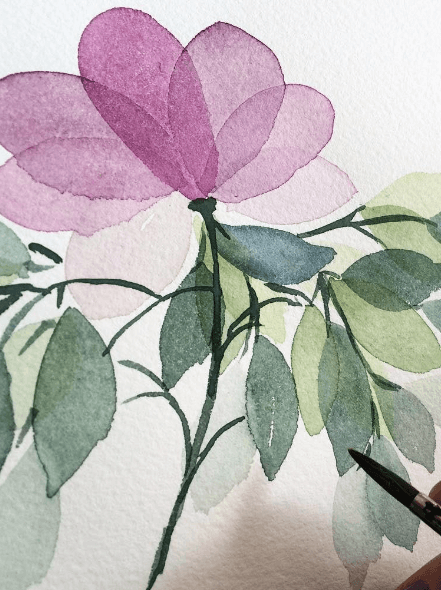Watercolor painting is a beautiful and versatile medium that allows artists to create stunning works of art. One of the most important techniques in watercolor painting is the transparent layering technique. This technique involves building up layers of transparent color to create depth and dimension in your paintings. In this article, we’ll go over the basics of the watercolor transparent layering technique and provide you with some expert tips and tricks to help you master this technique and create beautiful works of art.

The Basics of the Watercolor Transparent Layering Technique
The watercolor transparent layering technique involves building up layers of transparent color to create depth and dimension in your paintings. Here are the basic steps to follow:
- Start with a light wash: Begin by wetting your paper with clean water and then applying a light wash of color. This will create a base layer for your painting.
- Add more layers: Once your base layer has dried, you can begin adding more layers of color. It’s important to let each layer dry completely before adding another layer, as this will prevent your colors from mixing and becoming muddy.
- Build up the layers: As you add more layers, you can begin to build up the depth and dimension in your painting. Use lighter colors for the first few layers and gradually add darker colors as you go.
- Add details: Once you’ve built up the layers, you can begin adding details to your painting. Use a small brush to add fine details, such as the veins on a leaf or the texture of a rock.
Expert Tips and Tricks for Mastering the Watercolor Transparent Layering Technique
Now that you understand the basics of the watercolor transparent layering technique, here are some expert tips and tricks to help you master this technique:
- Use the right materials: It’s important to use high-quality watercolor paper and paints when working with the transparent layering technique. Cheap materials can lead to poor results, as the colors may not blend well or the paper may warp.
- Plan your painting: Before you start painting, take some time to plan out your composition and color palette. This will help you create a cohesive and balanced painting.
- Experiment with different colors: Don’t be afraid to experiment with different colors and color combinations. The transparent layering technique allows you to create unique and beautiful color blends.
- Use a light touch: When applying your layers, use a light touch with your brush. This will help prevent your colors from becoming too dark or muddy.
- Be patient: The transparent layering technique requires patience, as you need to wait for each layer to dry before adding the next. Take your time and don’t rush the process.
FAQs about the Watercolor Transparent Layering Technique
Q: Can I use the transparent layering technique with other painting mediums, such as acrylic or oil paint? A: The transparent layering technique is specific to watercolor painting and may not work with other painting mediums.
Q: How many layers should I add to my painting? A: The number of layers you add to your painting will depend on the effect you’re trying to achieve. Experiment with different layering techniques and find what works best for you.
Q: Do I need to use transparent colors for the transparent layering technique? A: While transparent colors are ideal for this technique, you can also use semi-transparent or semi-opaque colors.
Conclusion
The watercolor transparent layering technique is a beautiful and versatile technique that allows artists to create stunning works of art. By following the basic steps and expert tips outlined in this article, you can master this technique and create paintings with depth, dimension, and beautiful color blends. Remember to use high-quality materials, plan your composition and color palette, experiment with different colors, use a light touch, and be patient. With practice and perseverance, you can create beautiful watercolor paintings using the transparent layering technique.
